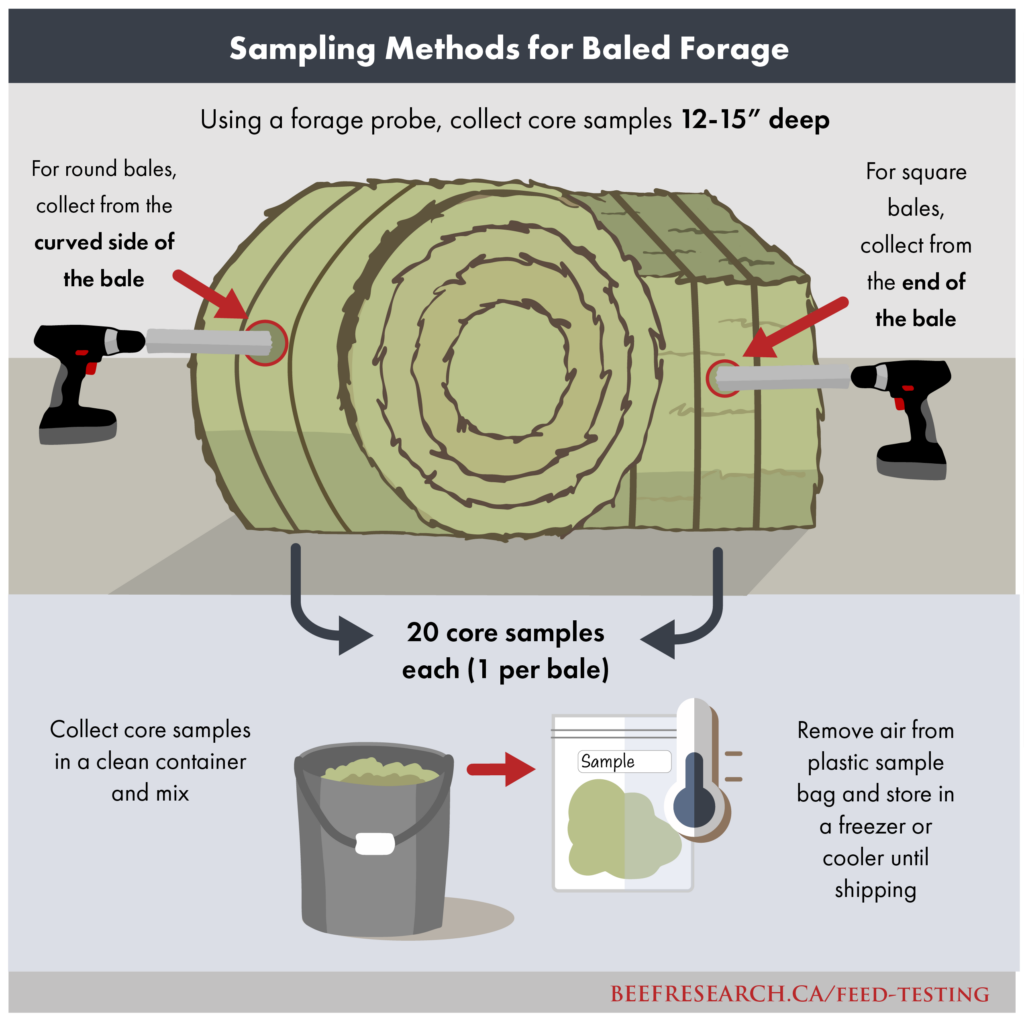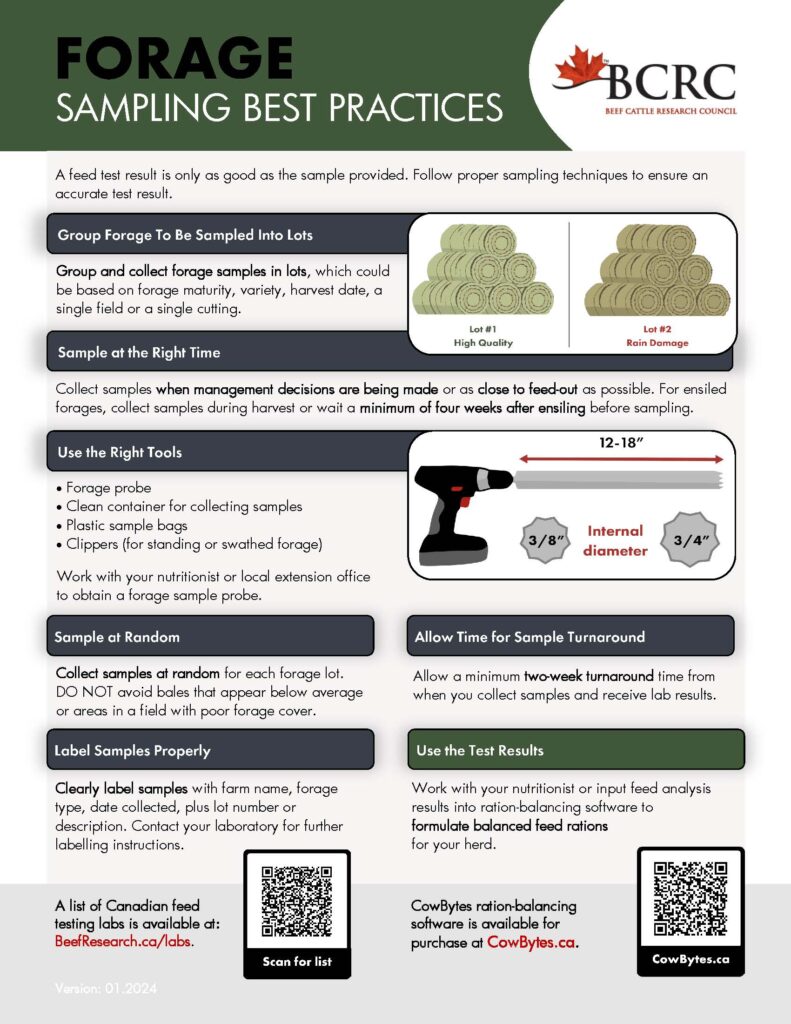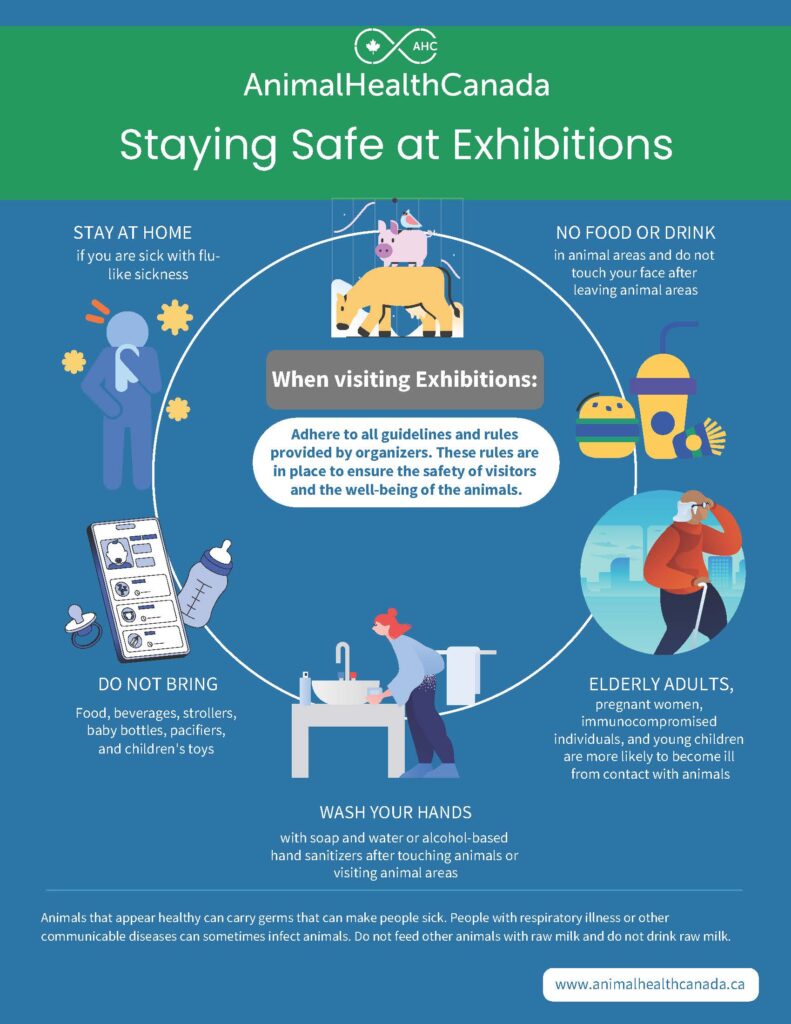Beef Resources for 4-H Leaders Now Available
Beef cattle 4-H projects provide youth with opportunities to expand their knowledge of the Canadian beef cattle industry and cattle production while developing leadership skills. Throughout the year, members learn principles of cattle selection and evaluation, nutrition and feeding, health, reproduction, marketing and more.
The Beef Cattle Research Council is pleased to offer resources and tools for the next generation of beef cattle producers with the new For 4-H Leaders webpage on BeefResearch.ca.
The following are a sampling of the resources available.
Infographics on Key Management Practices
Feed testing: Understanding the quality of the feed being fed on a beef cattle operation is paramount to maintaining animal health and welfare. Visual assessment of feedstuffs is not an accurate means to assess quality and may lead to cows being underfed and losing body condition or result in overspending on expensive supplements that aren’t necessary. It is recommended that producers test feeds prior to feeding to ensure cattle nutritional requirements will be met.
Biosecurity: Beef producers value pens and pastures of consistently healthy cattle with low treatment costs. Daily habits go a long way to reduce or prevent the spread of disease. It is important to understand the risks associated with working with beef cattle every day to ensure both the animals and the people who care for them remain safe.
Newborn Calf Care: Calving systems, management and timing can vary significantly from one farm to another and across the country. However, all systems share common goals, such as ensuring the birth of a healthy calf, maintaining the cow’s health and preparing her for successful re-breeding. Having effective management practices in place can help minimize death loss in calves.
Informative Videos
How to Assist with a Difficult Calving: What happens when something doesn’t go as planned? What if a calf comes backwards or a leg is turned back? Producers need to be prepared to assist a cow having a difficult birth (dystocia), including the knowledge of how and when to help. Besides being a problem at the time of birth, dystocia is related to higher incidence of disease and preweaning mortality.
How to Perform Hands-On Body Condition Scoring: By having an accurate measure of your cows’ body condition, you’ll have a good indicator of how to manage their rations to maximize productivity.
Calculating Pasture Carrying Capacity: What is carrying capacity, and what does it mean for your farm? Carrying capacity, also known as grazing capacity, is the amount of forage a specific pasture produces that is available for grazing animals. Determining a long-term, sustainable carrying capacity for a pasture is a key component of balancing forage supply and forage demand and is developed over a long period of time.
Interactive Tools and Graphics
Closed Herd: Biosecurity hazards on beef operations are sometimes overlooked; however, the risk of introducing disease onto your farm is real and relatively common. Routine practices such as shared fence lines, buying replacement breeding heifers or bulls, borrowing stock trailers, outsourcing farm work or hosting visitors can bring unwanted diseases onto your farm.

Evaluating Feed Test Results: This interactive decision tool evaluates the ability of a single feed to meet basic nutritional requirements of different classes of cattle in different stages of production under normal circumstances. It is not intended for use in ration balancing, but rather to alert you to potential issues with individual feed ingredients.
Body Condition: The productivity of beef cows depends largely on the amount of fat they carry. A herd of cows maintained in the right condition with an ideal layer of fat cover will have more (and heavier) calves than a herd of thin or over-fat cows. Body condition scoring is a low cost, hands-on method to determine the condition (amount of fat cover) cattle have. This easy, hands-on method is much more accurate than just looking at the animals.

Sharing or reprinting BCRC posts is welcome and encouraged. Please credit the Beef Cattle Research Council, provide the website address, www.BeefResearch.ca, and let us know you have chosen to share the article by emailing us at info@beefresearch.ca.
Your questions, comments and suggestions are welcome. Contact us directly or spark a public discussion by posting your thoughts below.






